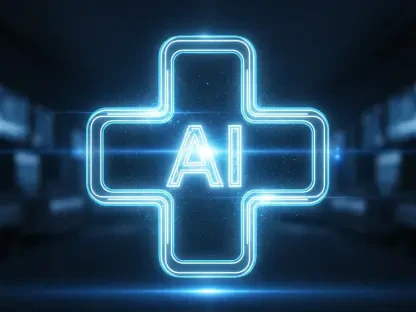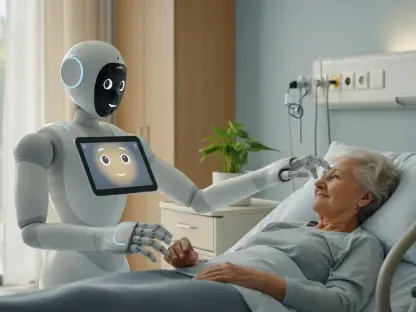The evolution of healthcare delivery is increasingly being shaped by advancements in healthcare informatics. This interdisciplinary field, which combines data generation, computer science, and healthcare, is transforming how patient care is approached, operational efficiency, and overall healthcare delivery. Leveraging data, advanced analytics, and cutting-edge technology, healthcare informatics is paving the way for precision medicine, improved patient outcomes, and streamlined healthcare operations. The integration of these elements is essential in understanding the myriad ways in which this field is revolutionizing modern healthcare systems and practices.
Advancements in healthcare informatics have introduced a robust technological infrastructure that facilitates the seamless collection, storage, analysis, and dissemination of health-related data. Within this infrastructure, Electronic Health Records (EHRs) have emerged as a cornerstone, transitioning patient information management from paper-based charts to digital records. EHRs provide real-time, patient-centered data that is immediately and securely accessible to authorized healthcare providers. As the adoption of EHRs has grown dramatically, surpassing 96 percent in U.S. hospitals by 2019, the benefits of enhanced care coordination, reduced medical errors, and informed clinical decision-making have become apparent.
The Role of Electronic Health Records (EHRs)
Electronic Health Records (EHRs) have revolutionized the way patient information is managed, transitioning from traditional paper charts to comprehensive digital records. EHRs offer a real-time, patient-centered approach to data, allowing authorized healthcare providers to access patient information instantly and securely. The versatility of these digital records enables healthcare professionals to make better-informed decisions, leading to improved patient care and outcomes. EHR systems facilitate comprehensive patient histories, which are crucial for diagnosis and treatment plans, and contribute to enhanced care coordination among medical teams.
The dramatic rise in EHR adoption is evidenced by the increase in usage within U.S. hospitals, where adoption rates soared from 9 percent in 2008 to over 96 percent in 2019. This widespread acceptance has underscored the significant impact of EHRs in healthcare informatics. By providing a centralized and easily accessible repository of patient information, EHRs have reduced the likelihood of medical errors and have enabled more informed clinical decision-making. Healthcare providers can now access a patient’s full medical history, previous diagnoses, treatments, and test results online, resulting in streamlined workflows and improved patient management.
Telemedicine and Remote Patient Monitoring
Telemedicine and remote patient monitoring (RPM) are two additional pillars of healthcare informatics that have significantly transformed patient care. Telemedicine witnessed an unprecedented 766 percent increase in visits during the early months of the COVID-19 pandemic, highlighting its importance in expanding access to healthcare. By allowing patients to consult with healthcare providers from the comfort of their homes, telemedicine minimizes the need for travel and reduces the risk of exposure to infectious diseases, thereby enhancing convenience and safety for patients, especially those in rural or underserved areas.
Remote patient monitoring technologies further augment the capabilities of healthcare informatics by enabling providers to collect vital signs and other health data from patients outside of traditional clinical settings. RPM interventions have been demonstrated to positively impact patients with chronic diseases, leading to improved health outcomes and a higher quality of life. These technologies allow for continuous monitoring of patients, facilitating timely interventions when necessary and effective management of chronic conditions. This continuity of care is essential in preventing complications and reducing hospital readmissions.
Empowering Patients with Mobile Health Applications (mHealth)
Mobile health applications (mHealth) represent a significant shift in healthcare informatics by empowering patients to actively manage their health. These apps provide a variety of functionalities, including medication reminders, symptom tracking for chronic conditions, and access to educational resources. The proliferation of mHealth applications is evident, with over 318,000 health-related apps available for download and the creation of more than 200 new apps each day. The accessibility and versatility of these mobile tools have transformed patient engagement and self-management.
mHealth apps offer patients the ability to monitor their health metrics, such as blood pressure, glucose levels, and physical activity, fostering a proactive approach to healthcare. By utilizing these applications, patients can communicate more effectively with healthcare providers, ensuring that treatment plans are adhered to and any deviations are promptly addressed. This increased engagement promotes better adherence to treatment regimens, ultimately leading to improved health outcomes. The integration of mobile technology in healthcare informatics empowers patients to make informed decisions regarding their health and well-being.
The Impact of Artificial Intelligence and Machine Learning
Artificial intelligence (AI) and machine learning (ML) are pushing the boundaries of what is possible in healthcare informatics, delivering transformative capabilities in predictive analytics, diagnostic accuracy, and personalized treatment plans. AI models have demonstrated the ability to detect breast cancer in mammograms with greater accuracy than human radiologists, showcasing the potential of these technologies to enhance diagnostic processes. Predictive analytics, bolstered by AI and ML, also improve the prediction of hospital readmission risks, enabling more targeted interventions and resource allocation.
The application of AI and ML in healthcare informatics involves analyzing vast amounts of data to identify patterns and trends that inform clinical decision-making. These technologies can process and interpret data at a speed and scale unattainable by human providers, offering insights that lead to optimized patient care. Personalized treatment plans, developed through AI-driven analysis, consider individual patient characteristics, such as genetic makeup, lifestyle, and environmental factors, ensuring more effective and tailored therapies.
Precision Medicine and Genomic Data Integration
Precision medicine is another emergent frontier in healthcare informatics that aims to tailor medical treatment to the individual characteristics of each patient. By integrating genomic data with Electronic Health Records (EHRs), healthcare providers can design treatments based on a patient’s genetic profile, lifestyle, and environment. Initiatives like the All of Us Research Program exemplify this approach, gathering data from over a million individuals in the United States to drive research and improve health outcomes through precision medicine. This method represents a monumental shift from the traditional one-size-fits-all model of medicine, offering more targeted and effective therapies.
Understanding the genetic factors that contribute to disease enables healthcare providers to develop personalized treatment plans that are more effective and have fewer side effects. The integration of genomic data into precision medicine allows for early interventions, preventive measures, and tailored therapies that address the unique needs of each patient. This approach not only enhances patient care but also contributes to more efficient use of healthcare resources, reducing the trial-and-error aspect of treatment.
Blockchain Technology for Secure Health Data Exchange
Blockchain technology is emerging as a viable solution for secure and efficient health data exchange, addressing key challenges in healthcare informatics such as data privacy, security, and interoperability. Blockchain’s decentralized and tamper-proof nature ensures that health information remains secure and is accessible only to authorized parties. By offering enhanced security and interoperability for health records, blockchain technology empowers patients with greater control over their data while fostering trust in digital health solutions.
The potential of blockchain technology in healthcare informatics extends to facilitating seamless information exchange and improving data transparency. By providing a secure and transparent way to manage health data, blockchain can bridge interoperability gaps and enable more coordinated care. The adoption of blockchain technology in healthcare could lead to advancements in areas such as patient consent management, secure sharing of medical records, and the integrity of clinical trial data, ultimately contributing to more robust and trustworthy health IT systems.
Addressing Challenges in Healthcare Informatics
Despite the immense potential of healthcare informatics, several challenges need to be addressed to fully realize its benefits. Data privacy and security concerns are paramount as the digitization of health information increases. Protecting sensitive patient data from breaches and unauthorized access remains a critical issue that healthcare organizations must continuously address. Additionally, interoperability issues due to the lack of standardization across different health IT systems can impede seamless information exchange, hindering the realization of a truly integrated healthcare ecosystem.
Another challenge lies in ensuring equitable access to the benefits of healthcare informatics. There is a risk that advancements in healthcare technology may not be equally accessible to all populations, potentially exacerbating health disparities. Efforts must be made to bridge the digital divide and ensure that vulnerable and underserved communities have access to the same technological advancements and quality of care. Ethical considerations surrounding the use of AI in healthcare, such as decision-making accountability and algorithmic biases, also need to be carefully managed to maintain patient trust and uphold ethical standards in medical practice.
As the field of healthcare informatics continues to evolve, it is essential to address these challenges through collaborative efforts between policymakers, technology developers, and healthcare providers. By prioritizing data security, ensuring interoperability, promoting equitable access, and addressing ethical concerns, the healthcare industry can harness the full potential of informatics to improve patient care and outcomes.
As we look toward the future, the promise of healthcare informatics remains vast. The continuous integration of emerging technologies, such as quantum computing and advanced natural language processing, could further revolutionize healthcare delivery. Quantum computing, for instance, holds the potential to accelerate drug discovery processes and enable the development of highly personalized medicine. Integrating social determinants of health with clinical data research can provide a more holistic understanding of patient health, addressing factors that influence health outcomes beyond the clinical setting.
Conclusion: The Promising Future of Healthcare Informatics
The evolution of healthcare delivery is being increasingly influenced by advancements in healthcare informatics. This interdisciplinary field merges data generation, computer science, and healthcare to transform patient care, operational efficiency, and overall healthcare delivery. By leveraging data, advanced analytics, and cutting-edge technology, healthcare informatics paves the way for precision medicine, enhancing patient outcomes and streamlining healthcare operations. Understanding the integration of these elements is crucial to recognizing how this field is revolutionizing modern healthcare systems and practices.
Developments in healthcare informatics have established a robust technological infrastructure that supports the seamless collection, storage, analysis, and dissemination of health-related data. Central to this infrastructure are Electronic Health Records (EHRs), which have shifted patient information management from paper-based charts to digital records. EHRs offer real-time, patient-centered data that is securely accessible to authorized healthcare providers. By 2019, EHR adoption in U.S. hospitals exceeded 96%, reducing medical errors, improving care coordination, and supporting informed clinical decision-making.









